Since its inception in 2019, the “One Number” has served as the primary benchmark for the number of people experiencing homelessness in Charlotte-Mecklenburg.
Generated from the Homeless Management Information System (HMIS), the One Number encompasses individuals enrolled in Emergency Shelter (ES), Transitional Housing (TH), Street Outreach (SO), Permanent Housing (PH) (if no move-in date to housing is recorded yet) and Coordinated Entry (CE) programs in HMIS. It includes both those experiencing sheltered homelessness and a portion of those experiencing unsheltered homelessness. It also provides a comprehensive By-Name List of each person experiencing homelessness in Charlotte-Mecklenburg.
The Housing Data Snapshot, the hub for the latest data related to housing and homelessness in Charlotte-Mecklenburg, not only provides an overall count and demographics of homelessness by household type and subpopulation, it also highlights inflow to (Newly identified, Returns from Permanent Housing, Returns for Inactivity) and outflow from (Exit to Permanent Housing, Exit to Inactivity), homelessness.
This week’s blog post provides the most recent One Number update; the latest One Number trends and analysis; and what this means for Charlotte-Mecklenburg.

